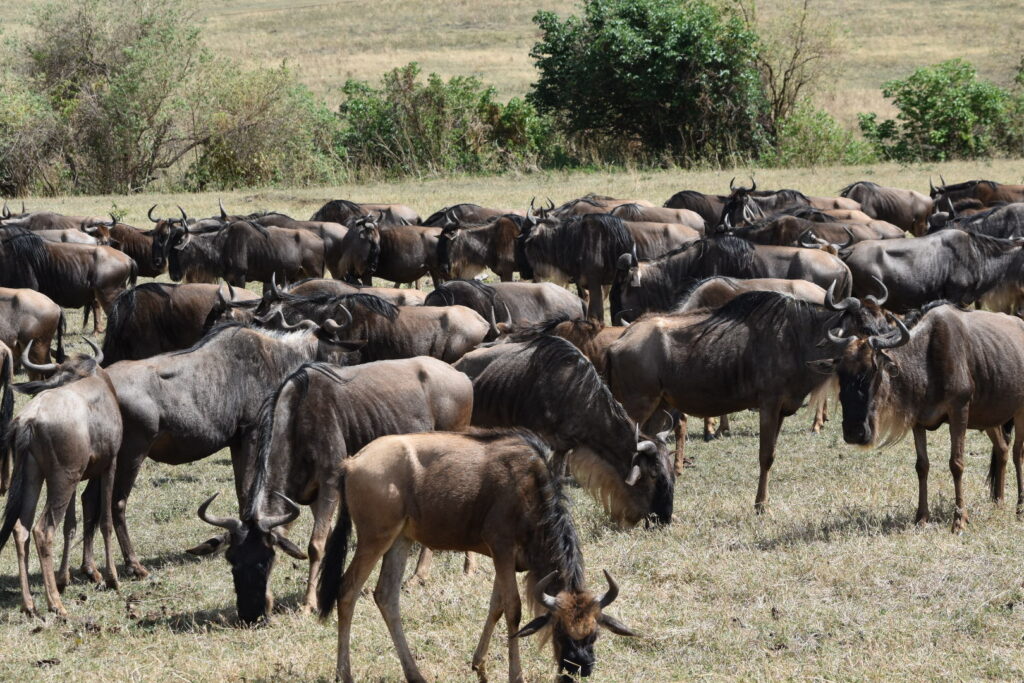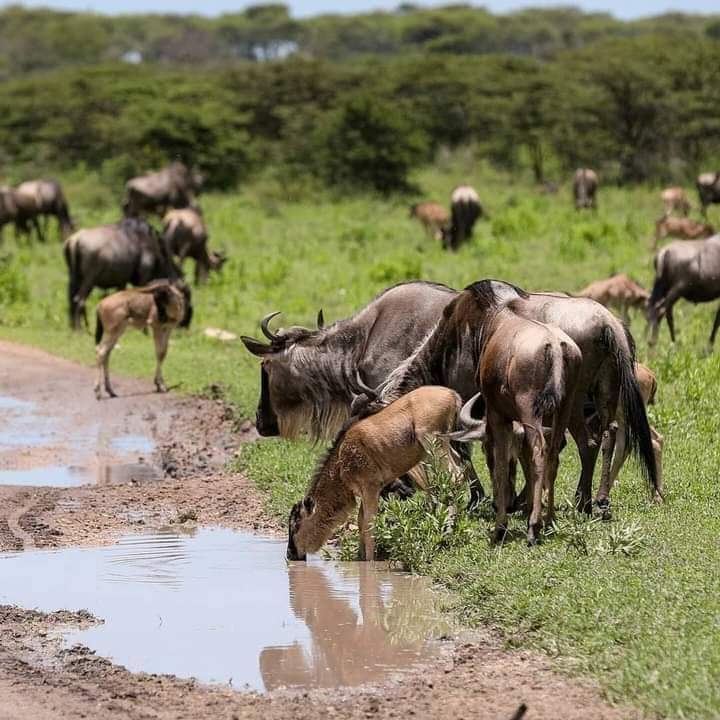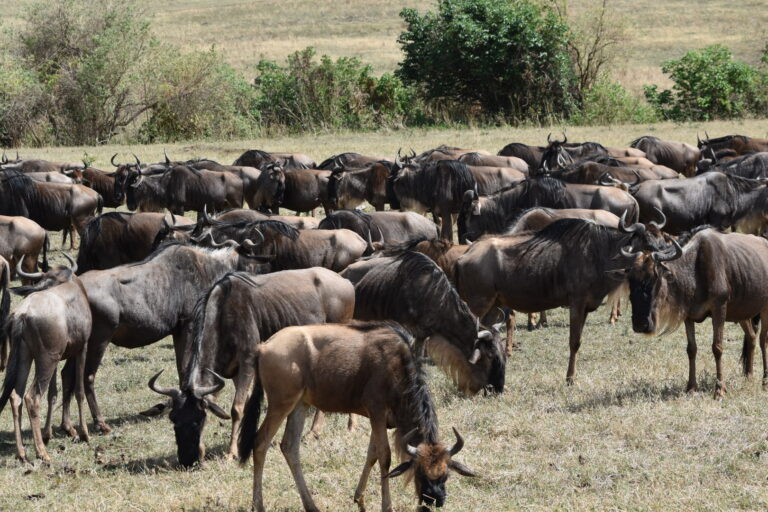Calving Season: The Great Migration’s
Best Kept Secret
What is the calving season?
The calving season of the Great Migration usually takes place between January to March of each year. While the route of the migration has remained the same for thousands of years, the exact timings of the journey vary depending on seasonal rainfall, so these timings are merely a guideline.
Between January and March, the herds are usually in the south of Tanzania’s Serengeti where they seek out fresh grazing. The wildebeest make their way as far south as the Ngorongoro Conservation Area (although not quite into the Crater itself), where they spread out across the lush plains to feast on the fresh grasses that spring up after the rains. These plains, with their abundance of nourishment, are also the perfect place for female wildebeest to give birth.
The wildebeest aren’t alone in their migration; they’re accompanied by scores of zebra and gazelle who perform the valuable function of eating the longer grasses that are less appetising to juvenile wildebeest. Once the zebra and gazelle have grazed, the soft, nutritious shoots lie exposed – perfect for young wildebeest calves to nibble on with ease.

What makes the south so special?
It’s no accident that the herds head south to feast and give birth. It turns out that the southern Serengeti’s sweet grasses are not just tasty, but perfect to nourish young wildebeest as they munch on this in their first few weeks.
What makes the grass here so nutritious? The explosive truth goes back thousands of years to when the area around Ngorongoro was highly volcanic. The ash spewed out by these erupting volcanoes was blown over the plains near Ndutu and settled here, to fertilize and nourish the soil, making the grasses that grow here simply irresistible to mother wildebeest and their babies.

Oh baby!
It is here, on these vast plains near Ndutu, that something really remarkable happens. Over half a million wildebeest are born within a two- to three-week period.
As many as 8.000 wildebeest calves can be born in one day!
Of course, this makes for some adorable and tender moments, but don’t be fooled into thinking there’s no drama here.
While wildebeest calves are champions at getting up and running with the herds within minutes of being born, this doesn’t ensure that opportunistic predators aren’t looking for a way to make a meal of the vulnerable and the weak.
It should come as no surprise that, with all of these baby wildebeest stumbling around on their wobbly legs, the number of predators in the area reaches an all-time high during this time of the year. However, an easy meal is no guarantee!
These mothers have been following this route for years and know most of the tricks that predators pull. Wildebeest mothers instinctively know to give birth on the shorter grass plains where approaching predators are easier to spot. Other mothers join them here and actually form a protective barricade around the younger and most vulnerable new additions to the herd in order to ensure they have the greatest chance of survival.


It is not only the older, more-experienced predators you will have the chance to see though. They too have co-ordinated their birthing times to coincide with the birth of their prey so that their young have the highest chance of survival. With thousands of baby wildebeest running around it is much easier for a mother lion, cheetah or leopard to find a meal for their hungry cubs as well as give them the opportunity to learn how to hunt for themselves. By practising on young calves before they have to go out and fend for themselves, young cubs learn valuable lessons during this time which are crucial to their future success.

Why you should choose a calving season safari?
A calving season migration safari will offer incredible sightings of wildebeest and their newborns, as well as an abundance of big cats looking for a successful hunt.
There’s plenty of dramatic action to see, but also the majestic sight of the seemingly endless Serengeti plains dotted, as far as the eye can see, with grunting, grazing wildebeest. Not to mention adorable new-born animals aplenty.
